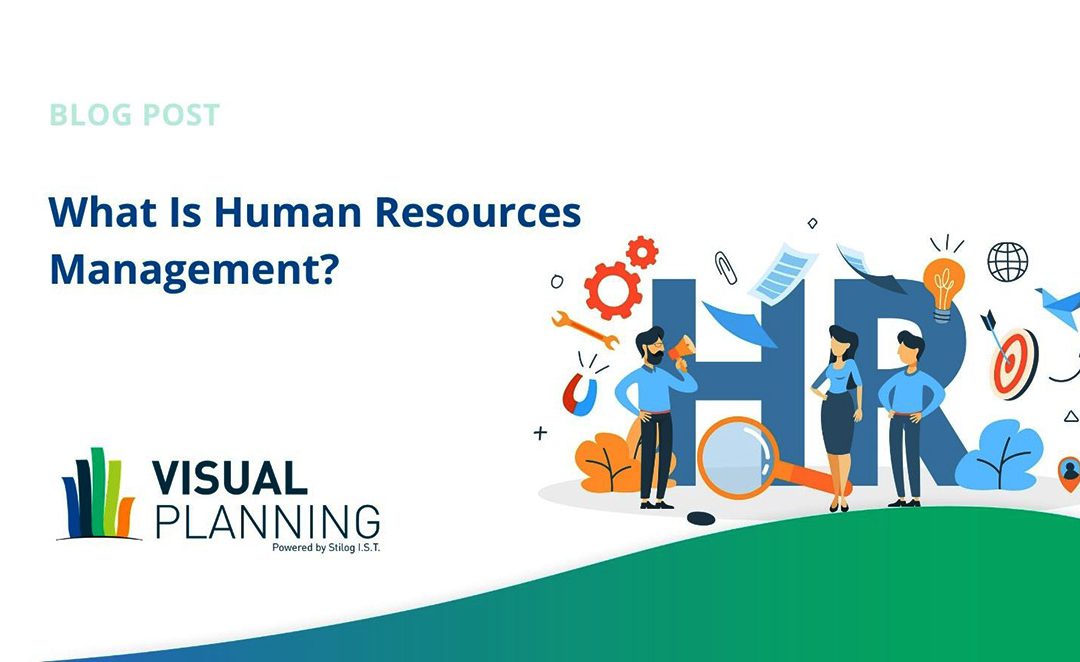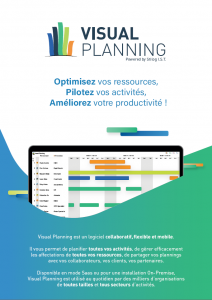Human resources management refers to a wide range of processes, teams and departments. The point of all these areas is to manage an organization’s staff, but human resources management covers much more than direct leadership. Find out more about what human resources management is, why it matters and how software can help your organization succeed with HRM.
What Is Human Resources Management in Simple Terms?
HRM covers all the elements of managing people in your organization — from even before you post the job description to after someone leaves a position with your company. HR management is at play when you hire someone, when you train and coach them and when you fire them, lay them off or promote them. It’s also involved if someone decides to quit.
HRM involves more than just the traditional HR department, though obviously these key professionals play important roles. These processes work like tendrils, reaching out from the core HR department and into the entire organization. Department and team leadership and every other employee may have at least a little role to play with regard to HR management, even if it’s just ensuring their own forms are completed and accurate.
What Are Some Major Areas or Tasks Relevant to Human Resources Management?
You can break human resources management into a variety of roles and responsibilities. The exact way these are broken down depends on who is doing the defining, but most definitions do cover the same overall responsibilities. Here’s a look at one way you can break human resources management into major areas.
1. Recruitment and Hiring
This is one of the first things many people think of when you say human resources. HR management in this category is concerned with identifying necessary open positions, finding the right people for those positions and hiring those applicants. Some of the overarching tasks under this umbrella can include:
- Creating accurate and helpful job descriptions
- Working to place advertisements for open positions
- Managing applicant tracking systems and other HR recruitment tools
- Vetting resumes and applications
- Working with hiring managers to narrow down applications and conduct any necessary vetting
- Onboarding new hires
2. Training and Development
Human resources management can also cover training and development. It’s not necessarily that the HR department be responsible directly for such matters. In some organizations, for example, HR conducts orientation and basic company training before turning new hires over to be trained within their respective departments.
However, strong HRM does take into account that training and development should occur via defined processes and policies. This helps ensure everyone has access to appropriate resources and that required training, such as compliance modules or annual certifications, aren’t overlooked.
Some tasks HRM might focus on in this area can include:
- Working with SMEs to develop and/or implement training programs
- Assisting managers and other leaders with coaching and development programs
- Providing appropriate HR training for management or executive staff
- Keeping track of mandatory trainings or continuing education hours and ensuring all staff maintains those requirements
3. Performance Management
Performance management can refer to a wide range of initiatives. Coaching and mentoring programs might fall under this umbrella, for example. At its very basic, performance management is the process of setting company, team and individual goals and working with each employee to help them achieve those goals. Each employee’s performance is compared to those goals at set periods — usually on an annual basis, when employees are evaluated and raises are issued as appropriate.
Human resources management includes both the act of managing performance as well as the act of overseeing that management. Organizations might have policies and metrics in place that leadership must attend to, thus creating oversight and helping reduce favoritism and other potential issues.
4. Compensation
Next to recruitment and hiring, compensation is the other area most people think of when they define HR. Human resources management is involved in setting and managing compensation that ranges from employee pay to benefits programs. Some things that might fall under this category can include:
- Managing pay ranges and salary information for the organization
- Administrating or assisting in the administration of various benefits
- Providing employees with information about benefits
- Assisting leadership in managing time off, vacation and sick leave requests
- Administering programs such as FMLA
- Working with others to implement and manage employee time tracking, scheduling and payroll solutions, including ensuring employee schedules and pay line up every pay period
5. Business Analytics
Business analytics covers a wide range of skills and tasks. But where it crosses with HRM is typically in attrition and succession planning. That’s the process of helping an organization understand how much work it has to do, when that work needs to be completed, and how many people it needs in order to meet that demand.
You know that not all your employees will stay with the company, so you can use data about attrition and demand to determine how many new employees you might need in the future. Business analytics helps HR and other teams start the process of hiring those people before they need them so they’re onboarded and ready to take on full loads when demand scales.
6. HR Technology
This is one area people often don’t realize is a part of HRM. But without technology, most modern HR processes grind to a halt — or at least the slowest of canters.
HR technology can include:
- HR information systems. All that employee and job data has to sit somewhere, and unless you’re a business of two or three, a Google Sheet won’t cut it. HR information systems help ensure employees, managers and others can access the information they need quickly while also keeping secure information on a need-to-know basis in protected databases.
- HR data analytics. Larger organizations may rely on systems to help them report on and analyze HR data. This helps with business analytics, hiring decisions, determining appropriate pay ranges and making other business decisions.
- Scheduling software. Manual scheduling is a dinosaur of human resources management. It takes forever, limits flexibility and almost always leaves something to be desired. Many organizations turn to scheduling software to keep project timelines, ensure everyone is compliant with training requirements or manage day-to-day employee schedules.
- Employee portals. Many organizations realize that a lot of HRM can actually be handled by the employees themselves. You don’t need an experienced HR rep to key in an employee’s new address, for example, and if staff can pull their own pay stubs or benefits statements from a portal, that reduces requests on the HR office.
As you can see, human resources management covers a lot of ground. That’s true whether you’re a small business with multiple employees sharing HR tasks or a large corporation with a dedicated HR department.
Employee scheduling software, project management tools and other HRM technology can be a game changer for any business. To find out how these types of solutions can make your job easier and create efficiencies and cost savings in your organization, contact Visual Planning today. We’re happy to schedule a demo of our solutions and talk with you about how we can help you solve common human resources management challenges or those unique to your organization.
Manale is a passionate about digital marketing. She joined STILOG I.S.T in 2018.
She brings SEO & SEA expertise, email marketing and creative content marketing to create a great brand experience for Visual Planning customers.



